Abstract In 2016, one of the largest renewable energy companies in the world, US-based SunEdison Inc., filed for bankruptcy when it couldn’t service the debt it had raised to...
Abstract This case, developed primarily from secondary sources, describes the founding of Chipotle Mexican Grill (Chipotle, hereafter) in 1993 by Steve Ells and its rapid ascent to popularity as...
Abstract This case looks at some key challenges before Jeremy Schwartz (Schwartz), CEO of The Body Shop International Plc. (Body Shop), and its International Director of Corporate Responsibility and...
Abstract This two-part case examines a major reorganization process which took place at Ten Thousand Villages Canada in 2013, as a response to severe challenges from the aftermath of...
Abstract Bridge International Academy (Bridge), the world’s largest and fastest growing private school chain, is known for its radically innovative “Academy-in-a-Box” model, which is a scalable and easily replicable...
Abstract Timbaktu Collective is a non-profit organization in southern India, working for the sustainable development of rural communities with an emphasis on ecological principles and social harmony. One of...
Abstract The dislocation of millions of people in various conflict zones of the Middle East and Africa is one of the greatest humanitarian catastrophes of our time. Given the...
Abstract Tongwei Group (China) (hereinafter referred to as “Tongwei”), started as an aqua-feed (fish feed) producer in the 1980’s when the country was just beginning the economic opening up...
Abstract Shortly after the Fukushima meltdown of 2011, the Swiss government developed an Energy Strategy 2050, aimed to build up renewable energy capacity, improve energy efficiency and phase out...
Abstract Founded in 2013 in Boston, Massachusetts, Fresh Truck is a mobile fresh produce market focused on increasing access to fresh produce and nutrition education in Boston’s low-income neighborhoods....
- 1
- 2

